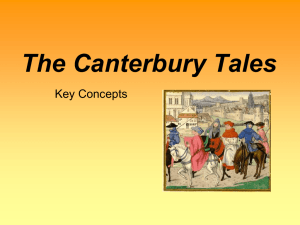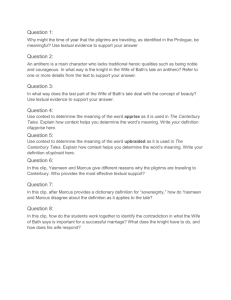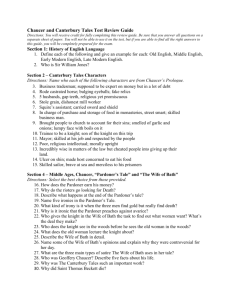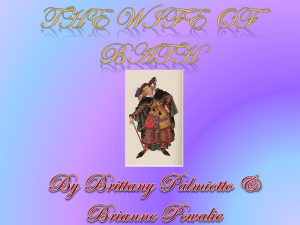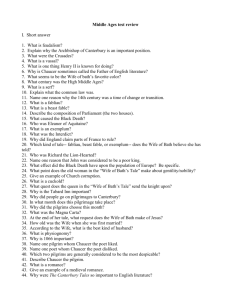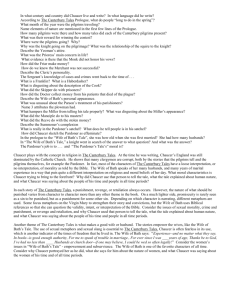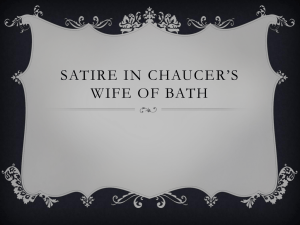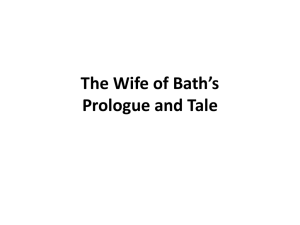The Research Paper (9H):
advertisement
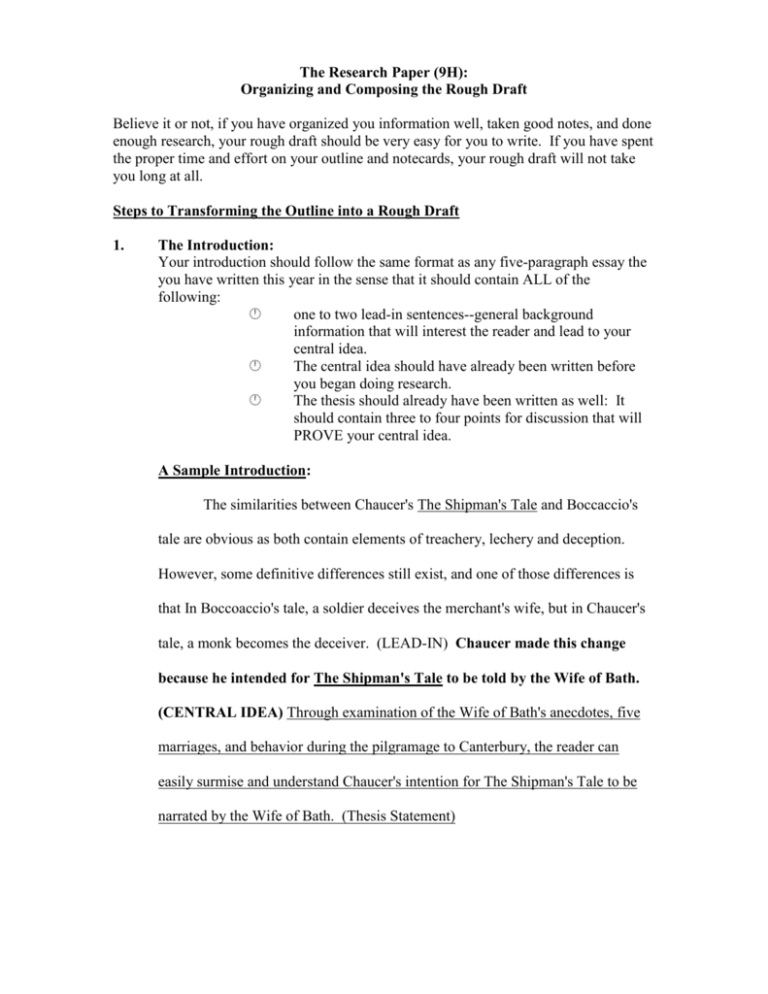
The Research Paper (9H): Organizing and Composing the Rough Draft Believe it or not, if you have organized you information well, taken good notes, and done enough research, your rough draft should be very easy for you to write. If you have spent the proper time and effort on your outline and notecards, your rough draft will not take you long at all. Steps to Transforming the Outline into a Rough Draft 1. The Introduction: Your introduction should follow the same format as any five-paragraph essay the you have written this year in the sense that it should contain ALL of the following: one to two lead-in sentences--general background information that will interest the reader and lead to your central idea. The central idea should have already been written before you began doing research. The thesis should already have been written as well: It should contain three to four points for discussion that will PROVE your central idea. A Sample Introduction: The similarities between Chaucer's The Shipman's Tale and Boccaccio's tale are obvious as both contain elements of treachery, lechery and deception. However, some definitive differences still exist, and one of those differences is that In Boccoaccio's tale, a soldier deceives the merchant's wife, but in Chaucer's tale, a monk becomes the deceiver. (LEAD-IN) Chaucer made this change because he intended for The Shipman's Tale to be told by the Wife of Bath. (CENTRAL IDEA) Through examination of the Wife of Bath's anecdotes, five marriages, and behavior during the pilgramage to Canterbury, the reader can easily surmise and understand Chaucer's intention for The Shipman's Tale to be narrated by the Wife of Bath. (Thesis Statement) 2. The Body Paragraphs: There is not "right" or "wrong" way of converting the body of your outline into a rough draft. Depending on how many supporting details your outline contains, either your numbers (1, 2, 3) or your capital letters (A, B, C) and the information contained in each section will become a paragraph. Be sure to provide a clear topic sentence for each paragraph. Be sure each paragraph somehow relates each point you make. Remember to put ANY words that are not your own in quotation marks. Remember to CITE any idea that is not your own. 3. Parenthetical Documentation: ANY idea that is not your own must be cited by following the statement with a set of parentheses containing both the name of the author of the source and the page number of that source. Ex: (Bloom 34) If the source has no author, use the first word of the article's title, not including words like "a," "an," or "the." Do not provide citations after EVERY sentence. Only cite when will be CHANGING sources. If you include the writer's name in the content of your paper, you only need to follow the sentence with the appropriate page number. Example: Cheryl Wall says that "Clifton closes the gap between past and present for her reader" (556) as she does the same for herself while standing on the banks of the Mississippi. If you change page number but not sources, you do NOT need to restate the name of the writer. Just include the change in page number. Example of a paragraph with parenthetical documentation: For Wordsworth nature was “a refuge from the vain striving of corrupt worldlings and a temple for the free worship of dedicated spirits” (Gurney 5). Wordsworth sees nature as a holy asylum capable of providing any willing spirit with the potential to transcend the confines of the material world and the depraved entities that exist within it. In other words, Wordsworth's relationship with nature becomes a vehicle for spiritual realization outside the confines of organized religion, its icons, and its buildings. In “Tintern Abbey” and “Daffodils,” Wordsworth develops and refines a personal relationship with nature, which provides specific medicinal effects for his spirit. Those effects, which have strong religious associations, include healing, asylum, regeneration, and insight (Saylor). 4. Direct quotations: Be sure to lead into all direct quotations. Explain the content of each quotation that you use as well. Example: Later in the poem, as Christabel and Geraldine "couch" in Christabel's room, Geraldine casts off the spirit of Chrstabel's mother, claiming: "This hour is mine-- / Though thou her guardian and spirit be, off woman, off" (204-06). Since the reader infers that Geraldine is there to do harm, it can also be inferred that the spirit of Christabel's mother is there to do good by protecting her daughter. DO NOT DO THIS: Geraldine says, "This hour is mine-- / Though thou her guardian spirit be, off woman, off" (204-06). 5. The Conclusion: Remember to restate the central idea (the point you are trying to prove). Restate the main parts of your thesis. End your conclusion with a statement that broadens the content of your paper and gives the reader something to ponder. Example: The reason Chaucer changed the lover from a soldier to a monk is for the sole purpose of fitting the tale to the Wife of Bath's beliefs and background. If the Wife of Bath had told a tale of an honorable soldier humiliating a young woman of questionable character, then the Wife of Bath's entire prologue and other feminist postulations of hers included throughout the tales, would be easily annulled by readers. With the monk as the despicable character, however, the Wife of Bath's tenets are supported and even proven true. DO NOT BEGIN OR END YOUR PAPER WITH A DIRECT QUOTATION! 6. The Works Cited Page: This page should be separate from the rest of your paper. It should contain all of the sources that you CITE in your paper. It should be in the correct MLA format. It should be in alphabetical order. Note: All you really need to do (if you have done your source cards correctly) is transfer the information from your source cards. See attached for an example of a works cited page. Raub 9 Works Cited Clifton, Lucille. Interview with Charles H. Rowell. Project Muse. The Johns Hopkins University Press. Lehigh University. 22 January 2004 <http://muse.jhu.edu/journals/callaloo/v022/22.lrowell.html>. Clifton, Lucille. the terrible stories. Brockport, NY: BOA Editions, Ltd., 1996. Holladay, Hilary. "black Names in White Space: Lucille Clifton's South." Southern Literary Journal. Spring 2002: 120-123. Literature Online. Proquest Information and Learning Company. Lehigh University. 22 January 2004 <http://lion.chadwiych.com>. Ostriker, Alicia. "Kin and Kin: The Poetry of Lucille Clifton." The American Poetry Review. Nov-Dec 1993: 22, 6. Expanded Academic ASAP. Gale Group. Lehigh University. 22 January 2004 http://infotrac.galegroup.com/itw/infomark>. Wall, Cheryl. "Sifting Legacies in Lucille Clifton's Generations." Contemporary Literature. 44:4 (2004): 552-574.
